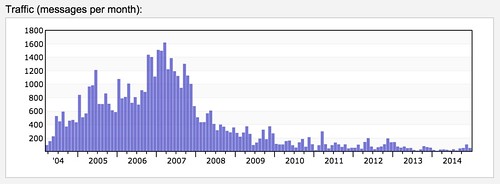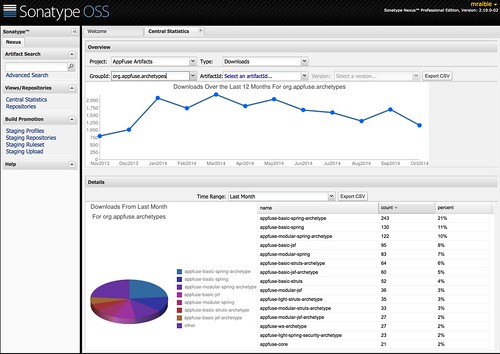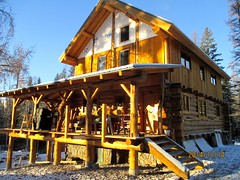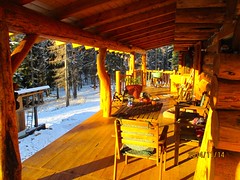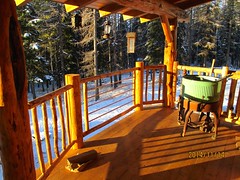AppFuse, Reduced
In November, I had some time off between clients. To occupy my time, I exercised my body and brain a bit. I spent a couple hours a day exercising and a few hours a day working on AppFuse. AppFuse isn't used to start projects nearly as much as it once was. This makes sense since there's been a ton of innovation on the JVM and there's lots of get-started-quickly frameworks now. Among my favorites are Spring Boot, JHipster, Grails and Play.
You can see that AppFuse's community activity has decreased quite a bit over the years by looking at its mailing list traffic.
Even though there's not a lot of users talking on the mailing list, it still seems to get quite a few downloads from Maven Central.
I think the biggest value that AppFuse provides now is a learning tool for those who work on it. Also, it's a good place to show other developers how they can evolve with open source frameworks (e.g. Spring, Hibernate, JSF, Tapestry, Struts) over several years. Showing how we migrated to Spring MVC Test, for example, might be useful. The upcoming move to Spring Data instead of our Generic DAO solution might be interesting as well.
Regardless of whether AppFuse is used a lot or not, it should be easy to maintain. Over the several weeks, I made some opinionated changes and achieved some pretty good progress on simplifying things and making the project easier to maintain. The previous structure has a lot of duplicate versions, properties and plugin configurations between different projects. I was able to leverage Maven's inheritance model to make a number of improvements:
[Read More]

